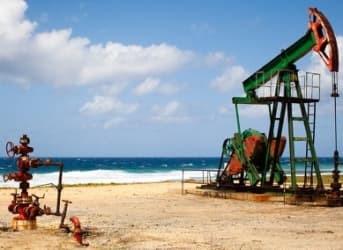With the end of the 54-year U.S. trade embargo on Cuba, and Cuban government moves to encourage foreign investors, Cuba is a suddenly attractive venue that is sitting on an estimated 4.6 billion barrels of oil and promising tantalizingly low production costs that defy low oil prices.
In December 2014, the U.S. lifted the trade embargo, and earlier that year—banking on an end to the embargo—Cuba began to lay the foundation for attracting foreign investment by offering corporate tax credits.
It sounds great—but there has been no rush onto this playing field. Related: ISIS Forced To Cut Wages As Oil Revenues Tank
Throughout last year, Cuba was busy trying to sell itself as the next up-and-coming venue.
What it has to offer is total undiscovered technically recoverable reserves of 4.6 billion barrels of crude oil, 9.8 trillion cubic feet of natural gas and 900 million barrels of natural gas liquids, based on 2004 estimates by the United States Geological Survey (USGS). The country has traditionally—and very steadily—produced about 50,000 barrels of liquids per day, most from the coastal reserve areas east of Havana.
But it’s not all about the reserves. It’s about past failures, an anticipated investor-unfriendly environment, and a lack of oil and gas infrastructure projects. Related: Supreme Court Keeps Coal Alive…For Now
Deepwater drilling hasn’t been successful. In the spring of 2015, Cuba noted that it had billions of barrels of oil in its Gulf of Mexico deepwaters, but there have been no commercial discoveries offshore as a result of exploratory drilling by Spain’s Repsol and Russia’s Zarubezhneft. So the promise now is being touted in the onshore and shallow water arenas.
Infrastructure plans that would make oil and gas exploration and production more feasible have languished in project purgatory. A 2010 bid won by China to build a refinery and upgrade a crude oil import terminal has stalled. And a key pipeline hooking the Cienfuegos refinery to the producing fields of Matanzas hasn’t been operable since the early 1990s.
What is really keeping investors away is the fact that Cuba has made it clear that while there is the potential for joint ventures in exploration and production, this will be a state-run game for the most part. Any major deal will have majority Cuban ownership. Related: OPEC-Russia Rumors Persist After Comments From Rosneft Chief
Independent MEO Australia oil company may disagree, because it’s moving in on Cuba’s Block 9, where oil has been recovered in the past, certain that there is a potential for “significant onshore prospects”, according to UPI. But it’s basing that on wells drilled from the 1970s to the early 1990s.
But MEO Australia is the exception rather than the rule.
Operating costs as low as $9 per barrel have MEO convinced that this is the one of the best new venues to play. And while those are impressive operating costs when oil is just under $30 per barrel, it still hasn’t been enough to prompt a rush on Cuba.
ADVERTISEMENT
Embargo lifting doesn’t immediately teleport Cuba from the Cold War era into the 21st century. Lifting the embargo is only the first of many doors Cuba will have to pass through to make this a key venue for foreign investors in oil and gas, and the question is whether Cuba—which is desperate to develop its oil and gas—will be willing to shed some state control to do so.
By Julianne Geiger of Oilprice.com
More Top Reads From Oilprice.com:
- Oil Prices Down Again On Energy Debt And Inventories Data
- OPEC Will Not Blink First
- Why Today’s Oil Bust Pales In Comparison To The 80’s


















